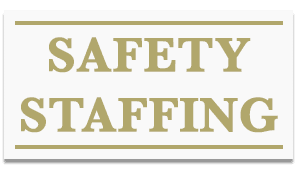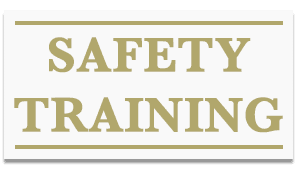Coronavirus FAQs | FDRsafety

During this trying time many employers will have to continue to operate to provide essential services to the public. We have put together a frequently asked questions fact sheet to help assist you through the days ahead. We are available to provide infectious disease preparedness and response plans, questionnaires, and COVID-19 training materials.
Coronavirus FAQs
QUESTION: How does someone get infected with COVID-19?
ANSWER: COVID-19 is spread from an infected person to another person that is in close contact (within 6 feet) and by respiratory droplets such a cough or a sneeze.
QUESTION: What is a good rule of thumb for the 6 feet?
ANSWER: Stay two arm lengths a part.
QUESTION: How severe is the illness?
ANSWER: The WHO (World Health Organization) says 80% of people with COVID-19 have a mild form of the illness with cold- or flu like symptoms. The people most likely to get seriously ill from this virus are people over 60 and/or those with pre-existing health conditions.
QUESTION: An employee has reported respiratory illness and a temperature; should we require the employee to report to work?
ANSWER: The CDC (Center for Disease Control) recommends encouraging employees with acute respiratory illness, other symptoms, and a fever to stay home and not report to work.
QUESTION: An employee is concerned they could be exposed to COVID-19 because there are cases in our community; should we require that employee to still come to work?
ANSWER: Currently, the CDC states the infectivity rate occurs when patients become symptomatic. If the employee shows no COVID-19, or flu like symptoms, then employees may report to work as scheduled. It is important employees monitor for symptoms for 14 days and take their temperature twice a day, for their protection and the protection of others.
QUESTION: We have a large workforce and a limited number of break areas what should we do?
ANSWER: Initiate an additional cleaning schedule for employee break areas; encourage employees to clean their break areas before and after use. Implement a staggered break policy to limit the number of employees in break rooms at one time including changing lunch schedules. Encourage and remind employees to wash their hands frequently and to keep a distance of 6 feet from other employees at all times.
QUESTION: Our supplier is low on our normal disinfectant; does bleach kill COVID-19?
ANSWER: Yes, household bleach may be used in routine cleaning of facilities; the CDC guidelines state to use 5 tablespoons (1/3rd cup) bleach per gallon of water.
QUESTION: Should we develop an Infectious Disease Preparedness and Response Plan?
ANSWER: Yes, employers should be prepared to protect their workforce with a written plan. The details will be determined by various factors including by not limited to the type of business, size, employee proximity, work environment, and community status.
QUESTION: We are required to conduct daily quality and safety meetings with our employees and usually conduct these in our break room with our whole shift; what should we do now?
Answer: Consider breaking into smaller groups 10 or less and conducting multiple mini sessions throughout the day. Maintain the recommended 6 foot distance at all times.
QUESTION: Our employees are really concerned about coming to work during this pandemic, what should we do?
Answer: Communicate, communicate, communicate. During these uncertain times remember to provide your employees with a safe, informative workplace. Post signs throughout your facility reminding employees to wash their hands, maintain a 6 foot distance from others, and bring any concerns directly to their supervisor.
For the latest information on COVID-19 and the workplace visit the OSHA Webpage at OSHA COVID-19.
Download COVID19 Fact Sheet Here
For more advice on safety, please reach out to FDRsafety.




